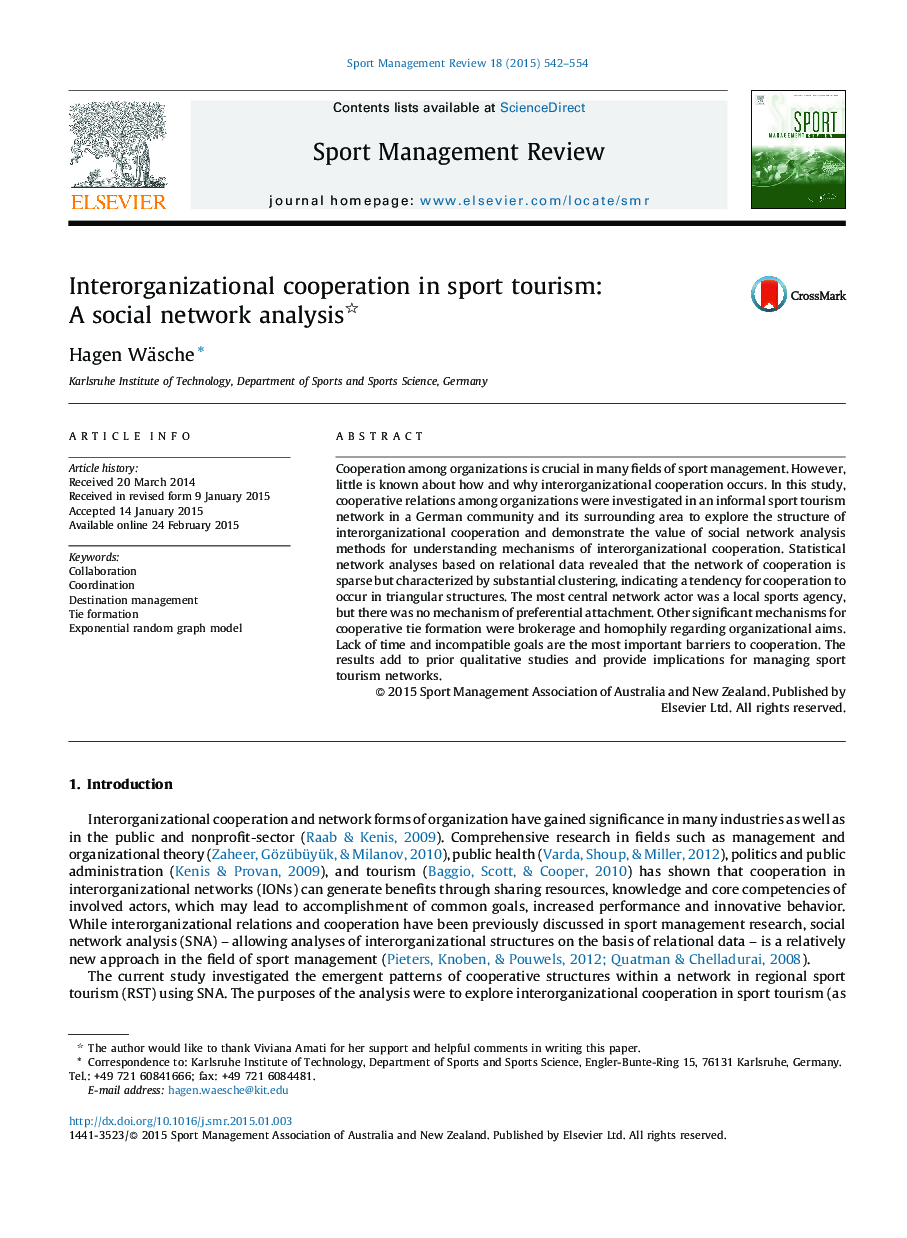| Article ID | Journal | Published Year | Pages | File Type |
|---|---|---|---|---|
| 140805 | Sport Management Review | 2015 | 13 Pages |
•Network formation and mechanisms for interorganizational cooperation are analyzed.•Exponential random graph modeling for analyzing sport tourism networks is introduced.•Structurally central and peripheral network actors are identified.•Triad closure, network brokerage and aim homophily are significant mechanisms.•The results provide implications for managing sport tourism networks.
Cooperation among organizations is crucial in many fields of sport management. However, little is known about how and why interorganizational cooperation occurs. In this study, cooperative relations among organizations were investigated in an informal sport tourism network in a German community and its surrounding area to explore the structure of interorganizational cooperation and demonstrate the value of social network analysis methods for understanding mechanisms of interorganizational cooperation. Statistical network analyses based on relational data revealed that the network of cooperation is sparse but characterized by substantial clustering, indicating a tendency for cooperation to occur in triangular structures. The most central network actor was a local sports agency, but there was no mechanism of preferential attachment. Other significant mechanisms for cooperative tie formation were brokerage and homophily regarding organizational aims. Lack of time and incompatible goals are the most important barriers to cooperation. The results add to prior qualitative studies and provide implications for managing sport tourism networks.
